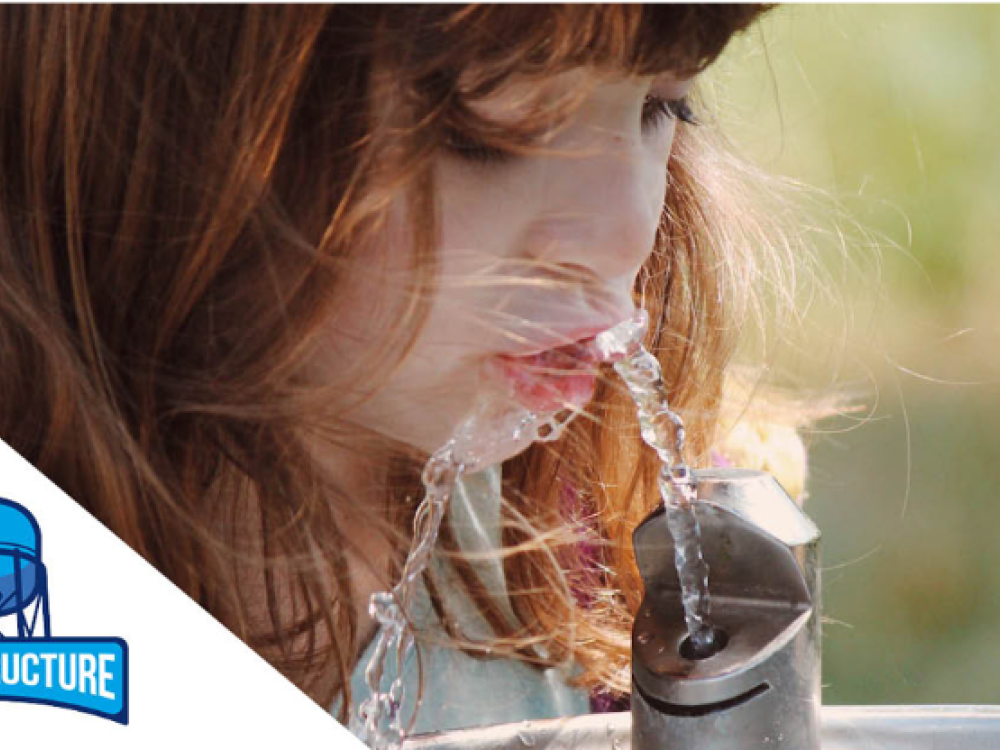
There’s no question that water is Earth’s most essential resource—as a society, we use it for tasks both mundane and extraordinary every day.
At Aqua, we understand and value the importance of monitoring and repairing the systems responsible for bringing us that water. When infrastructure is outdated or damaged, it can cause problems that extend far beyond individual home plumbing systems.
We caught up with Essential Utilities Vice President and Chief Environmental Officer Chris Crockett to better understand why Aqua’s determination to rebuild and repair our nation’s water infrastructure isn’t just important—it’s essential in order to maintain public health.
HOW YOUR WATER TRAVELS TO YOU MATTERS—A LOT.
It might seem like water simply rushes out of the tap, but its journey from the well or water treatment plant to your area is longer than you’d think. It’s possible that water has traveled many miles to reach your home, or maybe it was waiting to be released from a storage tank. This time spent traveling or sitting is called water age, and it can cause some less-than-ideal changes to the water.
“The longer the water sits in the pipes or tanks, the more things can happen to change its quality,” Crockett explains. “For example, the chlorine in the water will slowly degrade, and if it’s there too long, the chlorine can actually disappear.”
Though chlorine makes many people think of pool water (yuck), you’ll remember from our water purification blog that the proper amount needs to be present to keep your water safe for drinking. If pipes are outdated or rusty, the quality and safeness of the water can suffer. Without the presence of chlorine, bacteria and viruses can breed in the water supply, and that’s where things can go wrong.
OUT WITH THE OLD—ESPECIALLY PIPES.
Pipes make up most of our water infrastructure systems, which makes their physical integrity of the utmost importance.
“Old, corroding pipes can grow a biofilm of bacteria that lives in the rust and can reduce the chlorine levels in the water as it sits in the pipe,” says Crockett. Not only do these biofilms eat away at pipes, but they also can give the water a slight unpleasant odor or taste.
Pipe problems don’t stop there. Crockett adds that “leaking pipes not only let water leak out, but under very specific conditions of low pressure could let water outside the pipe leak in, introducing contamination and dirt.”
According to a report from the American Water Works Association (AWWA), most of America’s drinking water distribution system is more than 50 years old. Although this infrastructure was built to last, Aqua is determined to stay ahead of deterioration to protect our customers’ water supplies.
WHERE DOES PUBLIC HEALTH COME IN?
Water traveling through compromised (or just plain out-of-date) infrastructure can be contaminated through intrusion, corrosion, biofilms, sediment, water age, or any combination of these factors.
According to the AWWA report, a 2006 national estimate attributed nearly 50 percent of the risk of contracting a waterborne illness to distribution systems. As the AWWA puts it, there are three main concerns when it comes to understanding and tracking how water infrastructure can impact public health: Contamination mechanisms, infrastructure conditions, waterborne disease.
Using these three pillars, it’s easy to understand that poor infrastructure conditions can make water susceptible to more contaminants, which can affect public health through consumption and use of compromised water.
Although that’s a mouthful (and can sound concerning), allow us to give you peace of mind: Aqua is one step ahead of the game.
HOW, EXACTLY?
Upgrading water infrastructure is no small task, but we know the benefits are worth it. By now, you understand the impact that outdated systems can have on your everyday life, but rest assured that Aqua takes plenty of action to keep your water safe and reliable.
According to Crockett, in addition to using sophisticated computer programs to monitor the state of the system, replacing old pipes, and flushing newer pipes with chemicals to keep them from corroding, Aqua also has plenty of boots on the ground.
“We conduct extensive flushing exercises,” he explains. “We go out in areas that may need help moving the water, and we flush it via hydrants to get out the rust and bring in fresh water.”
If you keep an eye out, you might even see members of our team in your area flushing hydrants. It’s one simple step that we can take to continue our mission to protect and provide Earth’s most essential resource.
Stay tuned for another year of exploration and education throughout our Aquastructure blog series. See you next month!
